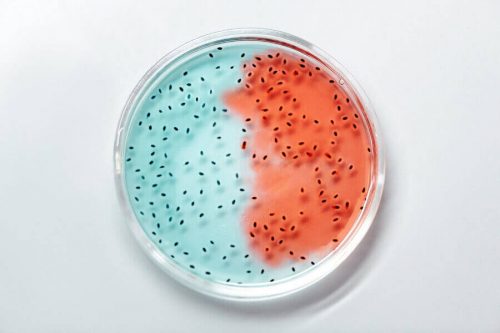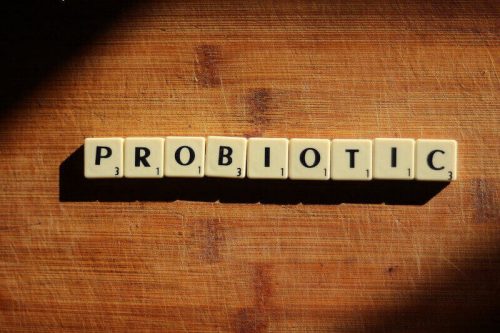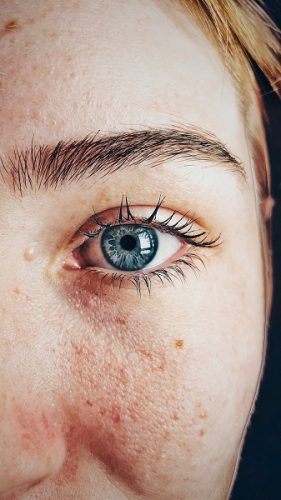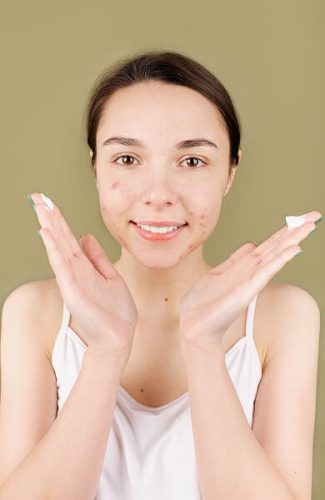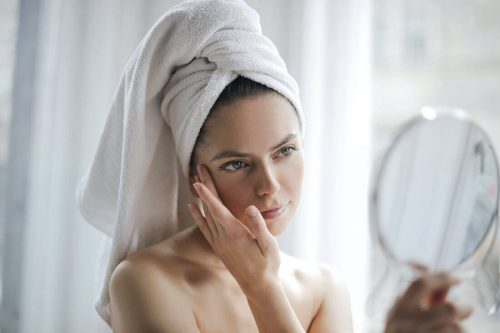The concept of “probiotics” is relatively recent, but they have been part of human history for thousands of years, being present in everyday items for us, such as bread, wine, and dairy products like cheese and yogurt. Its meaning comes from Greek and means “in favor of life”. Basically, much of the curiosity about these “little creatures” that, once ingested, can benefit our health, is that they are bacteria. And it will always seem a bit strange that by swallowing live microorganisms we can balance our body, won’t it? But first, these are not just any bacteria. Second, bacteria inside our bodies are not always a sign of disease. Probiotics have great functional properties and, to be classified as such, they must meet a series of requirements. For example, they must have human origin, be stable (because they need to be processed for consumption), and be able to positively influence metabolism. 
To give you an idea, the skin is inhabited by over 100 different species, with more than 1 million microorganisms per square centimeter.
Thus, both the skin and the intestine have a rich ecosystem full of living biological components, which are present in different places. In both, the relationship between the host (that is, the person who ingested the probiotics) and these microorganisms is also delicate. What will differ is this: each one will have a microbiota (the term referring to this collection of microorganisms) to call their own. On the other hand, skin microbiota is influenced by intestinal microbiota, as when the gut’s balance is off, meaning when there are more harmful microorganisms than good ones (known as dysbiosis), it’s full of bacteria that, for example, will not help the immune system at all. This way, the body becomes more vulnerable to diseases, to free radicals that age the skin, pimples, and all types of inflammations. If you want to learn more about these living beings that dwell within us and are so important for our skin—without us ever being properly introduced to them—just follow along to the end of this article.
- What are probiotics
- A very personal profile
- How the gut affects the skin
- Probiotics and acne
- Probiotics and aging
What are probiotics
Complex communities of microorganisms live in the human body. Their population is absolutely huge (and necessary): every square millimeter of a healthy intestine should have about 10 billion microorganisms to function properly.
Microorganisms represent about 1 to 3% of total body mass and, for an adult weighing 80 kg, that means 0.8 to 2.4 kg of bacteria.
Within this dynamic, one of these relationships is commensalism, when a species seeks food and takes advantage of another to obtain that resource. This is exactly how these microbial communities relate to the human body: in a commensal way. So, what does this look like in practice? Probiotics would act by increasing the population of good bacteria in the gut and, at the same time, preventing the growth of so-called “pathogenic” bacteria, those that can cause disease. Additionally, they would help with vitamin absorption and support the immune system. Probiotics began being used to treat intestinal problems, such as diarrhea, gastritis, and irritable bowel syndrome, but today they have broad use. It is now known, for example, that they can be used anywhere a normal microbiota exists, including the skin. That’s why, nowadays, their use in cosmetics is increasing, but in general, they are used in food, through consuming fermented products, or in pharmaceutical formulas, usually in sachets or capsules.
A very personal profile
We know that each individual has a unique and highly dynamic organism. Moreover, it’s no surprise that each human body is subject to countless factors that differentiate it even more throughout life, resulting in continuous and greater variety.
The most interesting thing is that, in terms of genome (that is, the genetic code, which contains all the hereditary information of a being), humans are 99.9% identical to one another, whereas the microbiota of each individual can be 80-90% different from each other. This leads many to call the microbiota the true fingerprint.
It’s estimated that in the intestinal microbiota there are about a thousand species. Although bacteria are a standout component of the human microbiota, they are not the only ones. Today, science believes that several digestive functions were entrusted to these “little creatures” during human evolution. However, the role of intestinal flora is much broader, going beyond digestion, as we will see below:
- This community of bacteria maintains constant exchange with the cells of the intestinal wall;
- It interacts with the immune system all the time, providing important information;
- It acts on intestinal permeability (which refers to how easily substances move through the intestinal wall), hormones, and inflammation.
Did you know the type of delivery can determine your microbiota? Yes, because it is during passage through the vaginal canal that the greatest number of beneficial bacteria are acquired. In a cesarean delivery, the first contact is with the bacteria relating to the surgical procedure and the hospital environment, which may not cause disease, but are not “normal” to encounter at birth.
How the gut affects the skin
It may sound odd, but it’s true: the skin and the gut have many things in common. Both are highly vascularized, have countless populations of microbes, and create a connection between the inside of the human body and the outside environment. It’s no wonder that there is now a strong current of thought, supported by several studies, linking excessive stress to skin diseases. We know that the large population living in the gut can interact, for example, with certain hormones, like the “happiness hormone” (more commonly known as serotonin) and the one associated with pleasure and motivation (dopamine). Along these lines, in one study it was observed that the use of probiotics (of the lactobacillus and bifidobacteria types), in humans, reduced levels of the corticoid hormone, which is linked to stress. On the other hand, this same study found that when a person is exposed to social stressors (such as pressure and other annoyances), for just two hours, this can already alter the profile of the microbial community. And not only that, there is now a wealth of information proving that the gut microbiota can trigger various skin-related problems, such as:
- Inflammation;
- oxidative stress (when antioxidant levels aren’t high enough to counteract the harmful effects of free radicals);
- skin tissue lipid content (changes in which are linked to skin disease and premature aging);
- mood.
Another point is that gastrointestinal disorders can cause changes in skin condition. An example of this is Celiac Disease (caused by gluten intolerance), which can present with itchy blisters; hair loss; vitiligo; and mouth lesions. In addition, there is now evidence that rosacea (a condition that causes redness, swelling, or even pus on the face), psoriasis, and atopic dermatitis (a chronic and hereditary disease that causes skin inflammation) are related to so-called intestinal dysbiosis.
Let’s take zinc as an example. A person may ingest the ideal amount of this mineral, but if the gut is in a state of dysbiosis, it will not be fully absorbed. Zinc deficiency, for example, is associated with decreased immune capacity, problems with skin lipid metabolism, and hyperkeratosis (which causes thickening and dryness of the skin).
Another point to note is that, as a dynamic ecosystem, the skin microbiome undergoes small changes over time, which is normal. However, some changes can indeed interfere with this relationship, leading to complications, such as a less efficient skin barrier. It’s also important to emphasize that when you eliminate or alter the body’s natural microbiota, the environment changes, leaving something like a biological vacuum, and antibiotics are the main factor that alters the gut flora. This favors the multiplication of transient microorganisms and other disease-causing agents.
Probiotics and acne
Although it is increasingly common among adults, acne is a dermatological condition most frequently seen during puberty, affecting 85 to 90% of the population in countries that follow a Western diet. To give you an idea, it is so common in this age group that some dermatologists even consider acne to be a normal process in development. In other cases, it is seen as a chronic disease, not limited to a specific age period. The issue is, it may be common, but it’s not something you get used to when it comes to its impacts on daily life, especially the distress it causes to self-esteem and social life, so new therapies for this are always being searched for and analyzed. Four main mechanisms are involved in acne development:
- production of an excessive amount of sebum;
- the excessive sebum combines with dead skin cells and gets trapped in the skin, potentially blocking the “hair follicle”—the structure where hair grows;
- bacterial colonization and proliferation (especially by “propionibacterium acnes”);
- as a result, inflammation appears.
The skin of teenagers with acne, for example, shows about 100 times more propionibacterium acnes colonies compared to healthy skin.
Even though we don’t know the exact cause of acne, we do know a lot about the set of factors related to it. Menstrual cycle, smoking, stress, genetics, the use of certain drugs, obesity, and sun exposure are some of them. Another factor that may encourage this condition is an unbalanced diet. For example, low fiber intake and a high concentration of fats cause changes in the gut microbiota, leading to metabolic diseases and skin inflammation. On the other hand, situations such as anxiety and depression can also alter this flora, increasing what’s called “intestinal permeability”. And do you know what that means? It’s as if the gut becomes too porous, making it easier for toxins to enter the bloodstream. These substances, in turn, may travel to the dermis and act there to promote acne. This is how the use of probiotics was suggested as an option that could help treat acne—because of their positive effects on gut health, their ability to fight disease-causing bacteria, help skin barrier function, and aid the body’s defense system. The first account of oral probiotic use for this purpose dates back to 1961. A study from that year showed that patients who took lactobacilli for acne treatment (mainly inflammatory acne) saw improvement in 80% of cases.
Probiotics and aging
We’ve seen so far how these tiny beings can strongly influence what happens in our body. Their mission for the skin is broad and aging is no exception, especially because, as the years go by, for example, there is a reduction in good bacteria (such as bifidobacteria). Aging occurs thanks to a combination of factors that together promote a series of changes in the skin, such as loss of collagen and elastin, which are responsible for support, elasticity, and firmness. One of the major concerns about this is ultraviolet radiation (UVR), as exposure to it can be a “trigger” for changes that affect the immune system, and lactobacilli could be an alternative for protection.
In a study with mice, oral use of a probiotic called “lactobacillus acidophilus” was found to reduce the formation of fine wrinkles caused by exposure to UVB radiation.
Carotenoids can be found in oranges, corn, pumpkin, tomato, and carrot, for example.
Using probiotics can also be beneficial in other aspects related to skin aging. It is now known that both intrinsic factors (such as genetics, hormone status, and free radical damage), and extrinsic ones (like sun exposure, smoking, and stress), all notorious for advancing the “skin’s clock”, can be influenced by using these microorganisms. On the other hand, healthy skin has a slightly acidic pH (between 4.2 and 5.6), which is very important, as it prevents the colonization of harmful bacteria and also helps the skin stay rich in moisture. However, after the age of 70, skin pH rises significantly. So how does this change the skin? Some enzymes are able to break down skin molecules (like collagen, for instance) more easily when the pH is at 7 or higher. Thus, any microbiota imbalance that leads to an increase in pH will stimulate these enzyme activities, leading to more skin flaking and breakdown of important molecules. It’s believed that using products with probiotic action is extremely beneficial, as they can produce acidic molecules, maintaining an adequate environment; and thus, the enzymes in our skin responsible for aging will not be activated. So it’s up to them to restore normal pH and, consequently, bring it back to levels closer to young, healthy skin.


